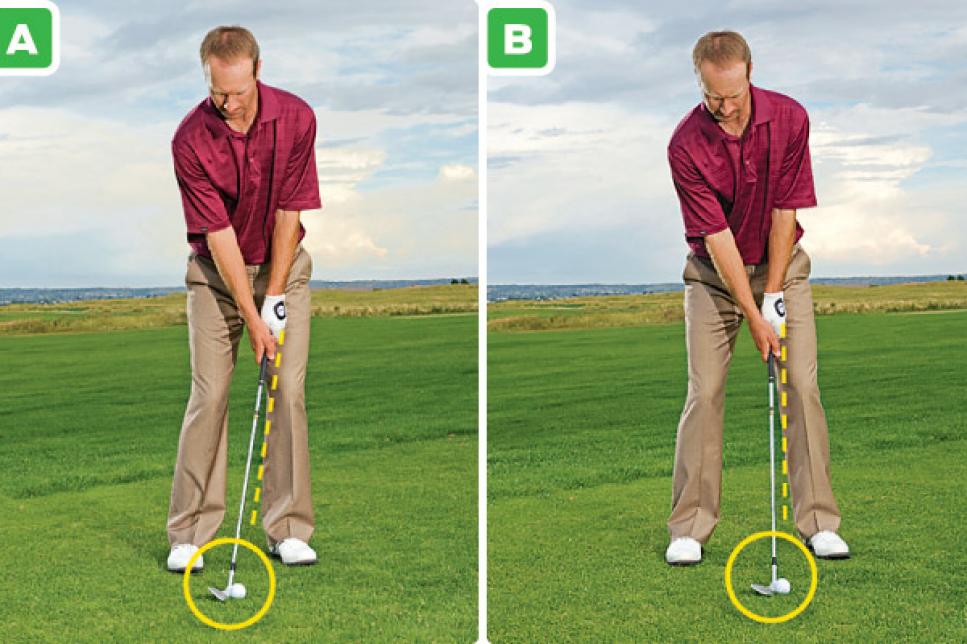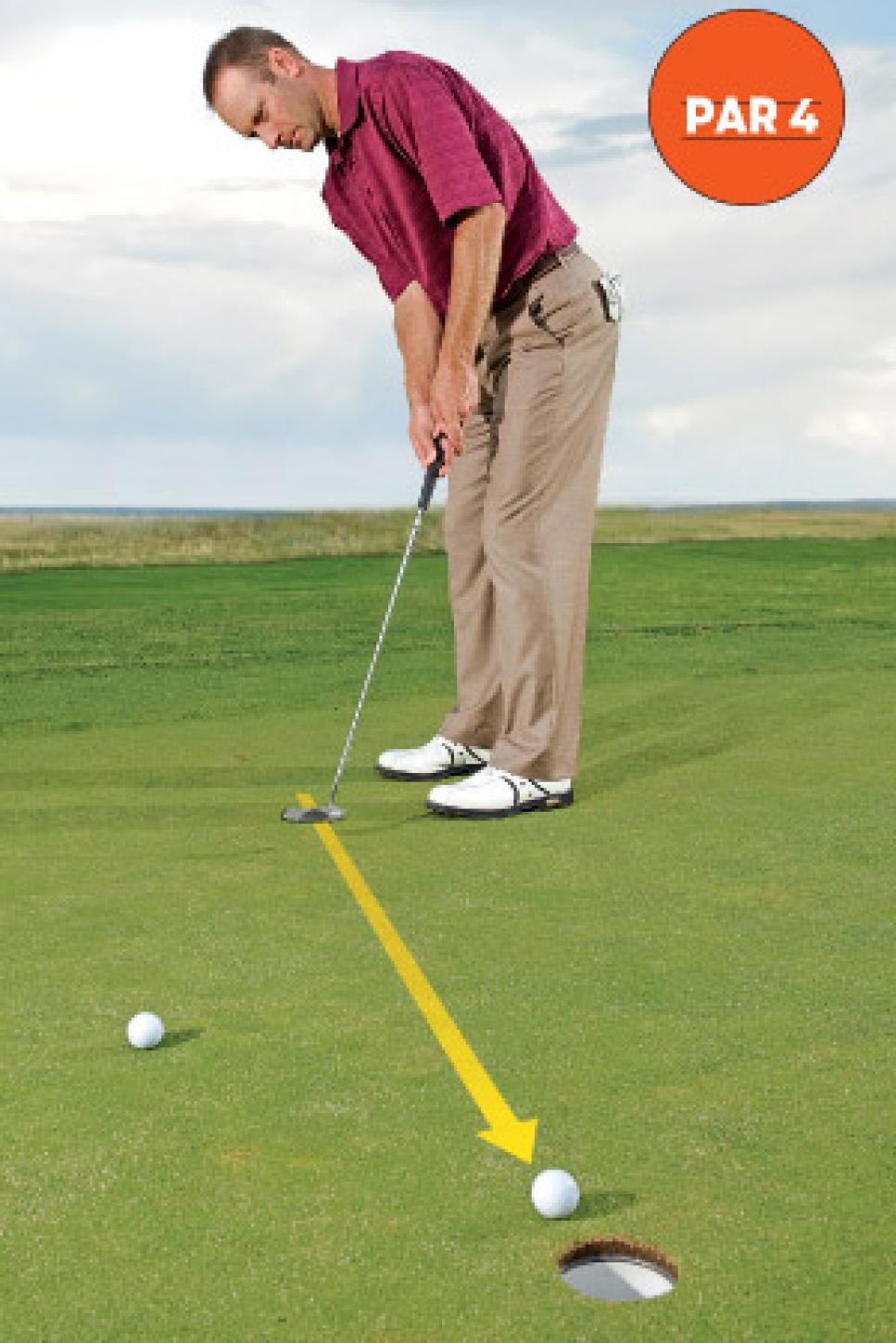Instruction
Test Your Trajectory

Being able to vary the height of your short approach shots gives you more flexibility when it comes to knocking it close. You can make the wind less of a factor or get to a back pin. To adjust trajectory, the swing stays the same; only the setup changes.
To hit a low shot, move the ball two inches back of center, stand closer to the ball for a more upright shaft angle and turn your right toe inward to lean your body and the club toward the target (A). For a high shot, move the ball two inches forward of center, open the clubface and turn your right toe outward slightly to help set your head a few inches behind the ball (B).

ON COURSE
PLAY BEST AND WORST
If you miss every green in regulation, chip or pitch your ball on and then two-putt, you still shoot 90 on a par-72 course. This means if you can get up and down just a few times, you can record a score in the mid-80s easily.
To replicate in a practice round the short-game pressure you feel during a real round, find a quiet time at your course and play nine holes where you hit two chip, pitch or bunker shots every time you miss a green. Putt out both of your short-game shots, keeping your score for each one.
You'll get a chance to work on your distance putting from the poorer chips and pitches, and you'll see the payoff for better short-game shots.
STAT FACTS
On approaches within 50 yards, 90-shooters miss the green more often than they get within five feet (19 percent versus 16 percent). Avoid risks, and hit the ball safely on.
*--Peter Sanders / shotbyshot.com *